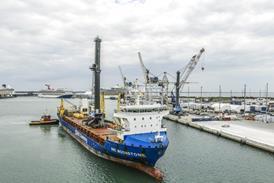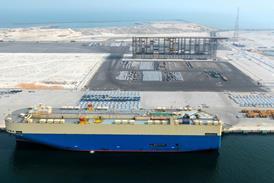The global supply chain will suffer as ports face ever-mounting threats from sea-level rises, extreme weather and shifting regulations, with billions of dollars in trade and infrastructure already at risk each year.

According to a new report from global transport and logistics insurer TT Club, produced in collaboration with engineering consultancy Haskoning, the Urgent Guidance for Ports, Waterways and Logistics Operations sets out the potential impacts of climate change on ports and provides a practical roadmap to strengthen resilience across maritime operations.
The report suggests immediate measures and long-term solutions to safeguard infrastructure, maintain operational continuity and ensure economic stability in the face of climate change. It also draws on historical case studies, including the shutdown of Gulf Coast ports during Hurricane Katrina, and the USD12 billion in maritime damages from Japan’s 2011 tsunami, to evidence the severe economic and social impacts when resilience measures are inadequate.
The report finds that nearly 90 percent of the world’s 3,700 major ports are exposed to damaging climate hazards. The data shows that extreme climate events are inevitable rather than hypothetical, and urgent action is therefore essential.
Alongside the risks, the report also highlights opportunities. By leveraging real-time climate data, IoT-enabled monitoring and AI-powered predictive analytics, ports can improve asset performance, reduce downtime and strengthen emergency preparedness.
It concludes that investments in sustainable infrastructure, from renewable energy integration to natural barriers such as mangroves, can protect assets while improving operational efficiency and supporting decarbonisation goals. It points to examples including the port of Long Beach’s coastal resiliency plan and the port of Brisbane’s advanced weather monitoring upgrades, where forward-thinking investment is already paying dividends.
Amy Savage, technical director of climate risk and adaptation at Haskoning said: “Climate adaptation should not be seen as a financial burden, but as a strategic investment in the long-term competitiveness of ports. By integrating engineering expertise with cutting-edge digital technologies, we can create adaptive, future-proof solutions that mitigate risks and unlock value throughout the supply chain.”
“Ports are the lifeblood of global trade, but they are also on the frontlines of climate change impact,” added Marika Calfas, TT Club board member and ceo of NSW Ports. “At NSW Ports, we see first-hand the importance of building resilience into supply chain infrastructure and operations. This guidance provides practical steps for understanding climate risks, planning adaptive responses and embedding resilience into the core of business strategy.”
















